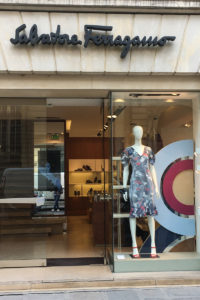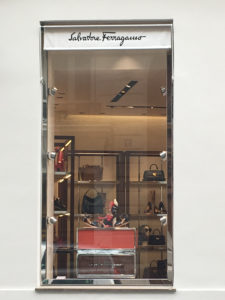Before Salvatore Ferragamo, shoes for women were mostly items to walk, rather ugly and not necessarily comfortable. After Salvatore Ferragamo, they became “objects of desire”. Let’s focus on the Italian designer who began his career on the golden world of American Cinema. Salvatore Ferragamo, born in Avellino in 1898, had a dream: he wanted to become a shoemaker. That’s why he started to train himself when he was a teenager, before joining in 1914 one of his brothers who used to work in a shoe shop in Boston, in the USA. After moving to Santa Barbara, California, in 1923, to open his own shop of repairing footwear, the Hollywood Boot Shop in Hollywood Boulevard, he didn’t have to wait long for success: thanks to the actors and actresses of the films world who began ordering custom-made shoes, he earned the nickname of “the stars’ shoemaker”.
 Once he perfected his production techniques due to his anatomy classes at the University of Los Angeles, in 1927 he decided to go back to Italy, stopping by in Florence. Those are the years of the opening of his first Italian store and of the consolidation of manufacturing women shoes for the American market. Unfortunately, times not being easy because of the financial crisis of 1929, we have to wait until 1938 for his comeback to the fashion world with his first patent/license: the cork wedge, a brilliant intuition that propelled him to the world of the most imitated designers. As a successful year, 1938 marks the location of brand’s headquarters in Palazzo Spini Feroni in Florence, acquired by Salvatore Ferragamo, and the opening of the first flagship stores in Rome, London and of course New York.
Once he perfected his production techniques due to his anatomy classes at the University of Los Angeles, in 1927 he decided to go back to Italy, stopping by in Florence. Those are the years of the opening of his first Italian store and of the consolidation of manufacturing women shoes for the American market. Unfortunately, times not being easy because of the financial crisis of 1929, we have to wait until 1938 for his comeback to the fashion world with his first patent/license: the cork wedge, a brilliant intuition that propelled him to the world of the most imitated designers. As a successful year, 1938 marks the location of brand’s headquarters in Palazzo Spini Feroni in Florence, acquired by Salvatore Ferragamo, and the opening of the first flagship stores in Rome, London and of course New York.
The post-war years determine the success of the Salvatore Ferragamo shoes as a symbol, all over the world, of Italian revival and creativity. It is the period of the inventions that will make history: from the stilettos reinforced with metal that became famous thanks to Marilyn Monroe to the invisible sandals with their upper made with nylon thread for which he won the prestigious “Neiman Marcus Award”, the Oscar of Fashion, awarded for the first time to a shoe designer.
 Before dying, in 1960, the designer managed to attend the first fashion show of the Maison Salvatore Ferragamo in Florence in 1951 and to create, in 1958, the pattern who has become the signature of the brand Salvatore Ferragamo, the “small hook” (in Italian gancino) you can now find on the purses but also on the other accessories or on the ready-to-wear. After his death, the brand, hence in the hands of his wife, Wanda Ferragamo Miletti, and his daughter Fiamma Ferragamo, started to extend its production with leather goods and women’s ready-to-wear. Within only a few decades, the Maison Salvatore Feragamo has become one of the most iconic Maisons of fashion Made in Italy, with its men’s ready-to-wear, ties, silk scarves, sunglasses, watches and jewels, not forgetting its wide website with a e-shop and its quotation on the stock market since 2011.
Before dying, in 1960, the designer managed to attend the first fashion show of the Maison Salvatore Ferragamo in Florence in 1951 and to create, in 1958, the pattern who has become the signature of the brand Salvatore Ferragamo, the “small hook” (in Italian gancino) you can now find on the purses but also on the other accessories or on the ready-to-wear. After his death, the brand, hence in the hands of his wife, Wanda Ferragamo Miletti, and his daughter Fiamma Ferragamo, started to extend its production with leather goods and women’s ready-to-wear. Within only a few decades, the Maison Salvatore Feragamo has become one of the most iconic Maisons of fashion Made in Italy, with its men’s ready-to-wear, ties, silk scarves, sunglasses, watches and jewels, not forgetting its wide website with a e-shop and its quotation on the stock market since 2011.
On top of that, the Museo Ferragamo, founded in 1995 in the Maison’s historical headquarters, Palazzo Spini Feroni in Florence and that houses in its first two rooms, more than 14000 models coming from the Museum’s archive. The shoes collection covers the entire working period of Salvatore Ferragamo with his iconic models, in addition to the other ones, the most representative of the seasons following his death until today. There’s nothing better to admire the technique and the inventiveness of one of the designers who have contributed to the success of Made in Italy.




